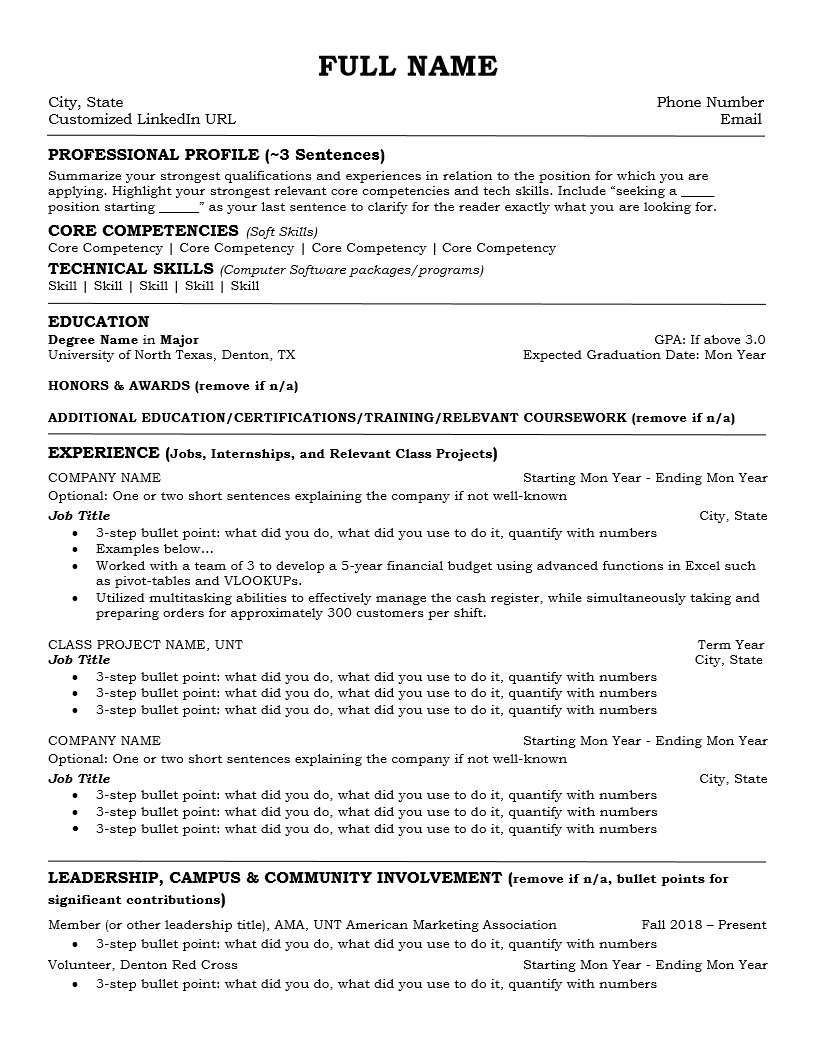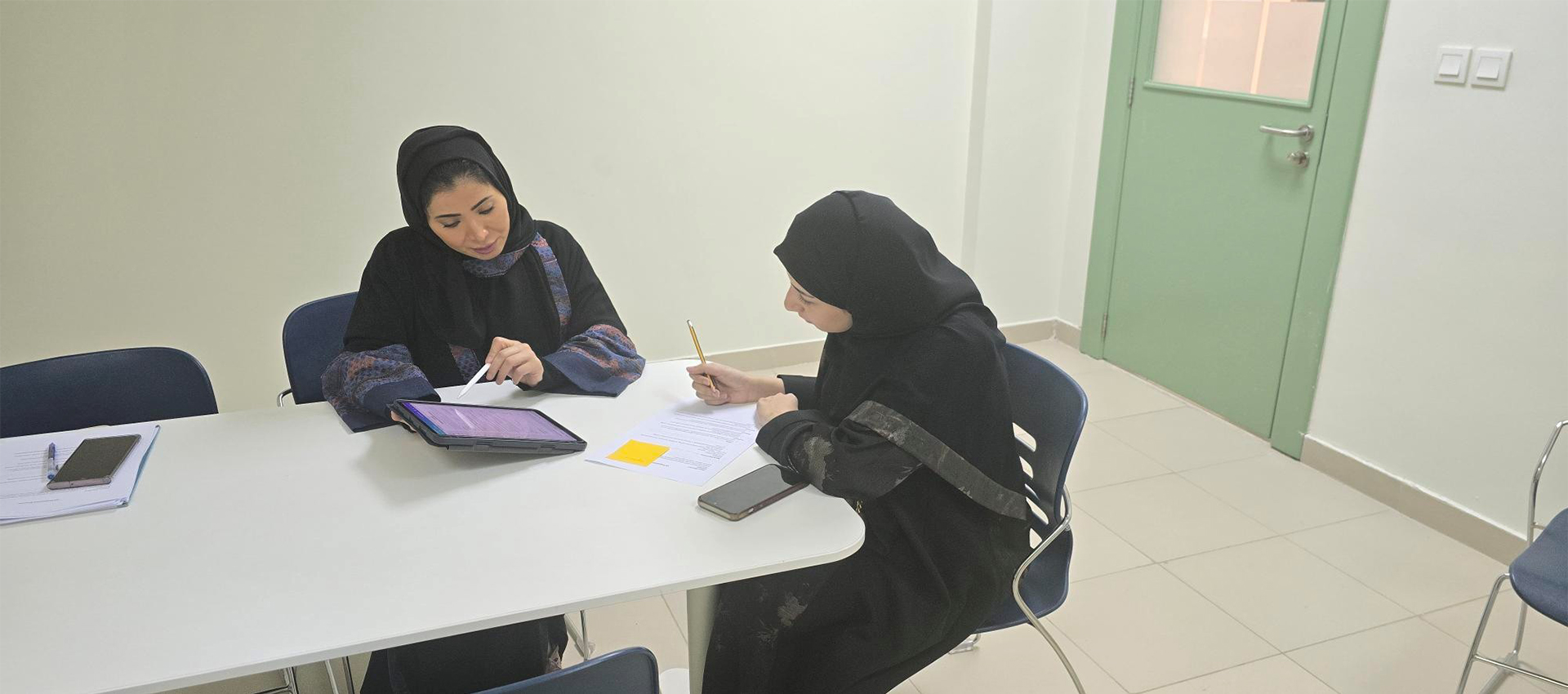CV Template

Tips For Writing a CV/Cover Letter
Your resume is one of the best marketing tools you can use in finding a career, and often one of the first things asked of you in the job or internship search process. This is your chance to convey your communication abilities, fit, skills, and strengths for the position you’re targeting. See the resources below to create a well-crafted resume.
Your application materials take time to develop. Be thoughtful and strategic in your approach. Suggestions in this section will help you get started.
Keep it to one page. Your resumes should only be one page in length. A good rule to follow is one page for every 8-10 years of experience.
Ensure the formatting is clear, concise, and consistent.
Be sure your resume is easy to read with clean, simple lines and equal amounts of text and white space.
Use a font that is readable, no smaller than 10 point or larger than 14 point.
Be consistent with your formatting techniques and use boldfacing and italicizing sparingly.
Include items that are most relevant to the position for which you are applying .
Your resume should include skills, experiences, coursework, projects, and activities that are the most relevant and significant to your career goals.
You may need to take some time to brainstorm what experiences are most related to your goals.
Be sure to include the most relevant information/sections toward the top of your resume.
Write action- and results-oriented bullet points in order to communicate your major accomplishments to an employer, it is important to write impactful bullet points within your relevant experience section.
You want to list the accomplishments that would be of interest to an employer and translate your experience into results, quantifying whenever possible. Sometimes this can be the most challenging part of writing a resume.
Common sections to include on a resume
Contact Information: As the heading of your resume, you should list your first and last name, phone number, and professional email address. If you do not have a professional email, you can list your UPM email. Your physical address and a link to your Linkedln profile, online portfolio, or website are optional additions to the end of your heading.
Education: Starting with your most recent experience, include the university name, graduation or expected graduation date, and the name of your degree(s). Your GPA can be included if it is above a 3.0. First- and second-year students may use high school information on a resume, but we encourage third- and fourth-year students to omit this information. You might also list relevant courses and projects you have completed as it relates to what you are applying.
Experience: In reverse chronological order (starting with current or most recent experiences first), list all relevant experiences -- part-time, seasonal, full-time, internships, etc. For each experience, make sure to have the organization or company name, location, the position(s) you held, and your dates of employment. Use three to four bullets to outline the most important responsibilities, skills, and achievements involved in your position.
Optional Sections: Skills, volunteer and community engagement, campus involvement, leadership, honors and awards, study abroad experiences, and membership to professional organizations or development experiences are examples of optional sections to boost your resume.
Cover Letter
Cover letters are important documents that can help your resume stand out among other candidates, but it can be difficult knowing how to prepare for and begin writing one. They are not easy, nor should they be hastily written. Here are some tips to consider when beginning your cover letter.
Write down the key requirements listed in the job description and research the company’s website, social media feeds, and employee LinkedIn profiles to identify the culture within the company and any challenges they might be facing. This research can help you decide how your experiences and skills fit into the organization and give insight into how you may be able to explain how your role within the company could address current challenges.
Based on the details of the job listing or the company, try creating tables, columns, or diagrams comparing your experiences, skills, and occupational goals and values with the company’s position. By recognizing how you match up to the job, you will be able to more easily convey your enthusiasm and appropriateness for the position in your cover letter. Being able to clearly identify why you chose to apply and to relay your excitement will help make your cover letter stand out with authenticity and personality.
As a cover letter is at most a one-page document highlighting your ability and potential for a position, you will want to include a short description of an experience that speaks to your qualifications and gives the reader a distinct idea about who you are as an employee and how your skills and work experience can add value to their company. If you have limited professional experience, try thinking about some strengths and skills from previous internship, volunteer, or work experiences that could be emphasized and transferred.
Using your research on the company and job listing, plus the list of skill sets you have identified, write a draft using a standard business letter block format (see examples on the next few pages).
Before submitting your application, you should review your cover letter and resume for any grammatical or mechanical errors. For formatting, content, or organizational concerns; you can schedule an appointment with a career counselor or by emailing career.cent@upm.edu.sa, or you can visit us at the Center for Career and Professional Development during Career drop-in hours, Sunday-Thursday from Noon to 4 p.m. at the CCPD-BC119.
Contact Us
BC-121, Male Students' Section, University of Prince Mugrin, Madinah, Saudi Arabia
